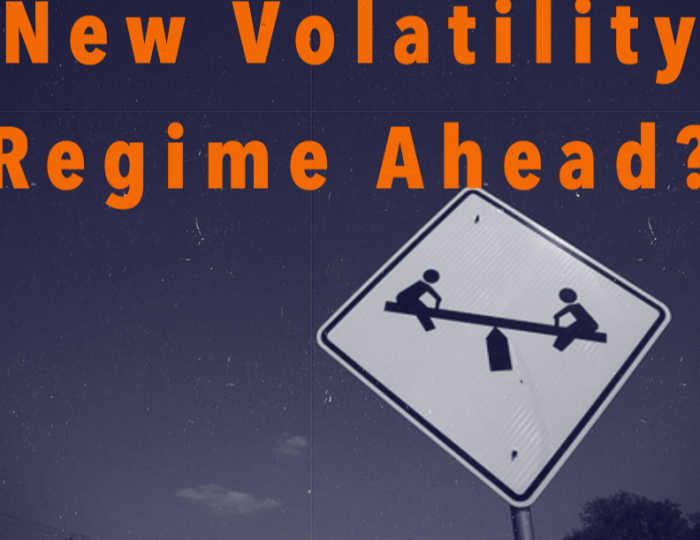April 16 2014
Turmoil in Ukraine, growth concerns in Japan, and weakness in U.S. equity markets are giving U.S. investors a short-term case of heartburn but none of this should undermine the overall case for optimism.
Global CIO Commentary by Scott Minerd
In the cold days of early March, we forecast a “bumpy and rather noisy journey” into spring (See “The Song Remains the Same”) that turned out to be well founded. The pullback in U.S. equities over the last two weeks is one of those bumps, but still, the NYSE Advance/Decline Line is in a strong upward channel, signaling that stocks could hit new highs over the next few months. Rising retail sales and increasing capacity utilization are evidence that the effect of severe winter weather is largely behind us and that the U.S. economy is on a sound footing. However, the likely negative effect of winter conditions on U.S. first quarter output make it unlikely that the 3 percent-plus GDP growth that many economists had forecast for 2014 will pan out. This may add to investor jitters following the recent equity sell off.
Even with the improving outlook for the U.S. economy, gold has rallied recently and 10-year U.S. Treasury yields declined by 10 basis points last week, as the United States became a safe-haven amid anxiety abroad. Ukraine’s descent into turmoil is increasingly worrying and is likely to become a bigger issue for investors. Markets are figuring out what unprecedented monetary action on the part of the European Central Bank might look like. In Asia, confidence in Japan’s economy is waning after the sales tax increase there and nervousness persists over Chinese economic growth prospects.
Developments in Europe are particularly interesting. Once taboo phrases, such as “quantitative easing” and “monetary stimulus,” are now being openly used as ECB policymakers become increasingly concerned about the strength of the euro and the inflation outlook. One thing is certain -- additional liquidity from the ECB will have a major impact on the pricing of credit in Europe. The chart below suggests that the ECB has room to act.
All of this will weigh on the near-term outlook for U.S. interest rates. However, for now, the 2.6 percent yield on 10-year U.S. Treasuries will likely prove to be an area of support and a tough level to break below. While current market conditions may make investors uncomfortable, I remain largely optimistic and believe that one year from now, U.S. credit spreads will be tighter and U.S. stocks will be higher.
Chart of the Week
Taylor Rule Suggests ECB Should Ease Further
Core inflation in the euro zone was revised down to 0.7 percent on Wednesday, returning to December’s all-time low. With disinflationary pressure mounting, and outright deflation an increasing possibility, the European Central Bank could soon move to ease policy further. Such a move would be justified by monetary policy rules such as the Taylor Rule, which currently shows the ECB’s policy stance is too tight. With rates at just 0.25 percent, the ECB’s easing would likely to be some form of quantitative easing.

Source: Bloomberg, Guggenheim Investments. Data as of 4/16/2014.
Economic Data Releases
Outlook for U.S. Economy Brightens
- Retail sales exceeded expectations in March, increasing 1.1 percent from February. It was the best month since September 2012 and gains were spread across categories.
- Industrial production had a second consecutive strong month in March, rising 0.7 percent. Manufacturing output rose in seven of the last eight months. Capacity utilization also rose to a post-recession high of 79.2, which may signal more capital expenditure in the near term.
- The Empire State Manufacturing Survey was below expectations in April at 1.29, down from 5.61.
- U.S. housing starts disappointed in March, increasing after the winter plunge, but by less-than-expected at 946,000. Regions hit hardest by winter weather had the strongest rebounds.
- Building permits fell in March to an annualized pace of 990,000, with weakness concentrated in multi-family housing.
- The NAHB Housing Market Index inched up to 47 from a downwardly revised 46. Expectations for future sales had the best gain since July 2013.
- University of Michigan consumer confidence was better than expected in the first April reading, rising to 82.6 from 80.0, the best monthly increase since December.
- Initial jobless claims dropped to 300,000 for the week ended April 5th, the lowest level since May 2007.
- U.S. consumer prices rebounded to 1.5 percent year-over-year, led by increasing prices of rents.
- The producer price index increased to 1.4 percent year-over-year in March after the biggest monthly increase since June. Rising services costs led the gain.
Euro Zone Recovering, China Decelerates
- Euro zone industrial production rose 0.2 percent in February, the first increase in three months. More than half of euro zone countries experienced gains.
- The ZEW Survey of current conditions in Germany accelerated in April to 59.5, the highest level in three and a half years. However, the gauge of expectations fell for a fourth straight month.
- U.K. unemployment dropped to 6.9 percent in February, the lowest in five years.
- The CPI in the United Kingdom ticked down to 1.6 percent in March, the lowest since October 2009.
- China’s first quarter GDP slowed to 7.4 percent year-over-year, slightly above expectations, but still a six-quarter low.
- China’s exports unexpectedly fell for a second straight month in March, down 6.6 percent from a year ago after February’s 18.1 percent plunge. The March decline was likely due to over invoicing from last year.
- Industrial production growth in China continued to trend lower in March, falling to 8.8 percent. Output of motor vehicles, electricity, and cement all fell.
Copyright © Guggenheim Partners LLC















